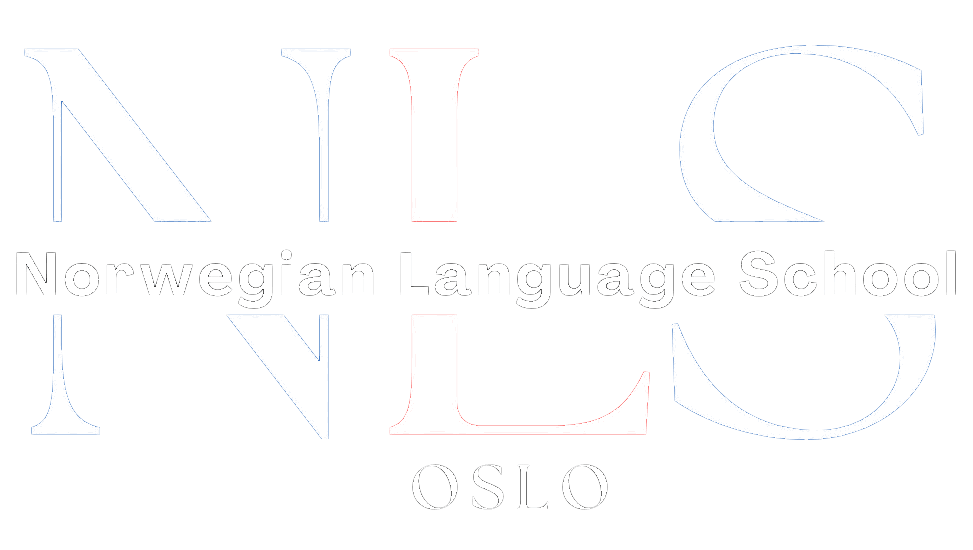

10 Common Norwegian Verbs and How to Perfect Them
Norwegian verbs play a crucial role in language learning, as they are the building blocks of sentences and allow us to express actions, states, and conditions. Understanding verb conjugation is essential for mastering the Norwegian language and being able to communicate effectively. In this article, we will explore the intricacies of Norwegian verb conjugation, as well as delve into the meanings and usage of some of the most common Norwegian verbs.
Table of Contents
ToggleKey Takeaways
- Norwegian verbs are important in language learning
- Understanding verb conjugation is crucial in Norwegian language
- Top 10 most common Norwegian verbs are essential to know
- Mastering “Å Være” (To Be) and “Å Ha” (To Have) is important in everyday Norwegian
- Enhancing communication skills with “Å Gjøre” (To Do), “Å Se” (To See), “Å Si” (To Say), “Å Spise” (To Eat), and “Å Reise” (To Travel)
Understanding Verb Conjugation in Norwegian Language
Verb conjugation refers to the process of changing a verb to match its subject in terms of tense, mood, aspect, and person. In Norwegian, verbs are conjugated based on the subject pronoun and the tense being used. The endings of verbs change depending on whether the subject is in the first person (I), second person (you), or third person (he/she/it). Additionally, verbs can be conjugated in different tenses such as present, past, and future.
For example, let’s take the verb “å snakke” (to speak) and conjugate it in different tenses:
– Present tense: Jeg snakker (I speak), Du snakker (You speak), Han/hun snakker (He/she speaks)
– Past tense: Jeg snakket (I spoke), Du snakket (You spoke), Han/hun snakket (He/she spoke)
– Future tense: Jeg skal snakke (I will speak), Du skal snakke (You will speak), Han/hun skal snakke (He/she will speak)
The Top 10 Most Common Norwegian Verbs You Need to Know
To kickstart your journey into learning Norwegian verbs, it’s important to familiarize yourself with the most common ones. Here is a list of the top 10 most common Norwegian verbs:
1. Å være – To be
2. Å ha – To have
3. Å gjøre – To do
4. Å se – To see
5. Å si – To say
6. Å spise – To eat
7. Å reise – To travel
8. Å lese – To read
9. Å skrive – To write
10. Å forstå – To understand
Let’s take a closer look at the meanings and usage of these verbs in sentences.
Mastering the Art of Using “Å Være” (To Be) in Norwegian
The verb “å være” is one of the most important verbs in any language, including Norwegian. It is used to indicate existence, identity, and states of being. Here are some examples of its usage in different tenses and sentence structures:
– Present tense: Jeg er student (I am a student), Du er flink (You are talented), Han/hun er glad (He/she is happy)
– Past tense: Jeg var på kino i går (I was at the cinema yesterday), Du var syk forrige uke (You were sick last week), Han/hun var trøtt i morges (He/she was tired this morning)
– Future tense: Jeg skal være der klokken åtte (I will be there at eight o’clock), Du skal være forsiktig (You should be careful), Han/hun skal være borte i en uke (He/she will be away for a week)
Perfecting the Usage of “Å Ha” (To Have) in Everyday Norwegian
The verb “å ha” is another essential verb in Norwegian, as it is used to indicate possession or ownership. Here are some examples of its usage in different tenses and sentence structures:
– Present tense: Jeg har en hund (I have a dog), Du har en bil (You have a car), Han/hun har en bok (He/she has a book)
– Past tense: Jeg hadde en fin ferie (I had a nice vacation), Du hadde mye å gjøre (You had a lot to do), Han/hun hadde en god ide (He/she had a good idea)
– Future tense: Jeg skal ha en fest neste uke (I will have a party next week), Du skal ha en ny jobb (You will have a new job), Han/hun skal ha en bursdagsfeiring (He/she will have a birthday celebration)
Enhancing Your Communication Skills with “Å Gjøre” (To Do) in Norwegian

The verb “å gjøre” is used to indicate actions or activities. It is a versatile verb that can be used in various contexts. Here are some examples of its usage in different tenses and sentence structures:
– Present tense: Jeg gjør lekser (I do homework), Du gjør en god jobb (You are doing a good job), Han/hun gjør rent i huset (He/she is cleaning the house)
– Past tense: Jeg gjorde en feil (I made a mistake), Du gjorde det riktig (You did it correctly), Han/hun gjorde det bra på prøven (He/she did well on the test)
– Future tense: Jeg skal gjøre det senere (I will do it later), Du skal gjøre det bedre neste gang (You will do better next time), Han/hun skal gjøre en presentasjon i morgen (He/she will do a presentation tomorrow)
Improving Your Vocabulary with “Å Se” (To See) in Norwegian
The verb “å se” is used to indicate the act of seeing or observing. It is commonly used in everyday conversations. Here are some examples of its usage in different tenses and sentence structures:
– Present tense: Jeg ser på TV (I am watching TV), Du ser vakker ut (You look beautiful), Han/hun ser en film (He/she is watching a movie)
– Past tense: Jeg så deg på festen (I saw you at the party), Du så en interessant dokumentar (You saw an interesting documentary), Han/hun så et spennende teaterstykke (He/she saw an exciting play)
– Future tense: Jeg skal se deg i morgen (I will see you tomorrow), Du skal se en ny film i kveld (You will see a new movie tonight), Han/hun skal se en konsert neste uke (He/she will see a concert next week)
Learning the Different Meanings and Uses of “Å Si” (To Say) in Norwegian
The verb “å si” is used to indicate the act of speaking or saying something. It is an important verb for expressing thoughts, opinions, and statements. Here are some examples of its usage in different tenses and sentence structures:
– Present tense: Jeg sier sannheten (I am telling the truth), Du sier alltid fine ting (You always say nice things), Han/hun sier at han/hun er lei seg (He/she says that he/she is sorry)
– Past tense: Jeg sa det til henne i går (I told her yesterday), Du sa noe viktig på møtet (You said something important at the meeting), Han/hun sa at han/hun ville komme senere (He/she said that he/she would come later)
– Future tense: Jeg skal si det til sjefen (I will tell it to the boss), Du skal si hei til henne fra meg (You will say hi to her from me), Han/hun skal si unnskyld i morgen (He/she will say sorry tomorrow)
Practicing the Proper Usage of “Å Spise” (To Eat) in Norwegian
The verb “å spise” is used to indicate the act of eating. It is a fundamental verb for expressing hunger, meals, and food-related activities. Here are some examples of its usage in different tenses and sentence structures:
– Present tense: Jeg spiser frokost (I am eating breakfast), Du spiser en sandwich til lunsj (You are eating a sandwich for lunch), Han/hun spiser middag nå (He/she is eating dinner now)
– Past tense: Jeg spiste en deilig dessert i går (I ate a delicious dessert yesterday), Du spiste en hel pizza (You ate a whole pizza), Han/hun spiste ikke opp maten sin (He/she didn’t finish his/her food)
– Future tense: Jeg skal spise på restaurant i kveld (I will eat at a restaurant tonight), Du skal spise hos meg i morgen (You will eat at my place tomorrow), Han/hun skal spise hos foreldrene sine neste uke (He/she will eat at his/her parents’ place next week)
Expanding Your Knowledge of Norwegian Culture with “Å Reise” (To Travel)
The verb “å reise” is used to indicate the act of traveling. It is not only a useful verb for expressing movement but also provides insights into Norwegian culture and the importance of exploration. Here are some examples of its usage in different tenses and sentence structures:
– Present tense: Jeg reiser til Oslo i morgen (I am traveling to Oslo tomorrow), Du reiser mye i jobben din (You travel a lot for your job), Han/hun reiser rundt i verden (He/she travels around the world)
– Past tense: Jeg reiste til Paris i fjor (I traveled to Paris last year), Du reiste til fjellet i helgen (You traveled to the mountains over the weekend), Han/hun reiste til New York forrige måned (He/she traveled to New York last month)
– Future tense: Jeg skal reise til Spania neste sommer (I will travel to Spain next summer), Du skal reise med tog i morgen (You will travel by train tomorrow), Han/hun skal reise til Asia neste år (He/she will travel to Asia next year)
In conclusion, Norwegian verbs are essential for language learning and effective communication. Understanding verb conjugation and familiarizing yourself with common Norwegian verbs will greatly enhance your ability to express yourself in the language. The top 10 most common Norwegian verbs, including “å være,” “å ha,” “å gjøre,” “å se,” “å si,” “å spise,” “å reise,” “å lese,” “å skrive,” and “å forstå,” provide a solid foundation for building your vocabulary and sentence structures. By practicing and expanding your knowledge of Norwegian verbs, you will be well on your way to becoming a proficient speaker of the language.
If you’re looking to expand your Norwegian vocabulary beyond just verbs, check out the article on “Norwegian in the Kitchen: Cooking Instructions and Recipe Terms.” This article will teach you essential vocabulary and phrases related to cooking and food preparation in Norwegian. Whether you’re a beginner or an advanced learner, this article is a great resource for improving your language skills in the kitchen. Read more

Norwegian A1-A2
Course Overview The Norwegian A1-A2 course is an online program focused on teaching essential Norwegian grammar and vocabulary. It includes a variety of materials and topics, with opportunities to interact with a Norwegian teacher entirely online. Curriculum Highlights The course covers key areas such as grammar and vocabulary and topics such as family, daily life, education, work, traditions, and leisure activities. Who Should Enroll? This course is perfect for beginners or those at the A1 or A2 levels who want to improve their Norwegian skills. What You Get Access to the full Norwegian A1-A2 course. A monthly 1-hour online conversation with a teacher. Many written and oral assignments. Comprehensive information on Norwegian grammar, Norwegian vocabulary and how to use them, important sentence structures, etc. Tips on additional resources to further enhance your Norwegian learning.
0 students enrolled
Last updated Dec 10th, 2024
If you want to learn Norwegian, you can register for classes here. We look forward to hearing from you and helping you become fluent in Norwegian.






